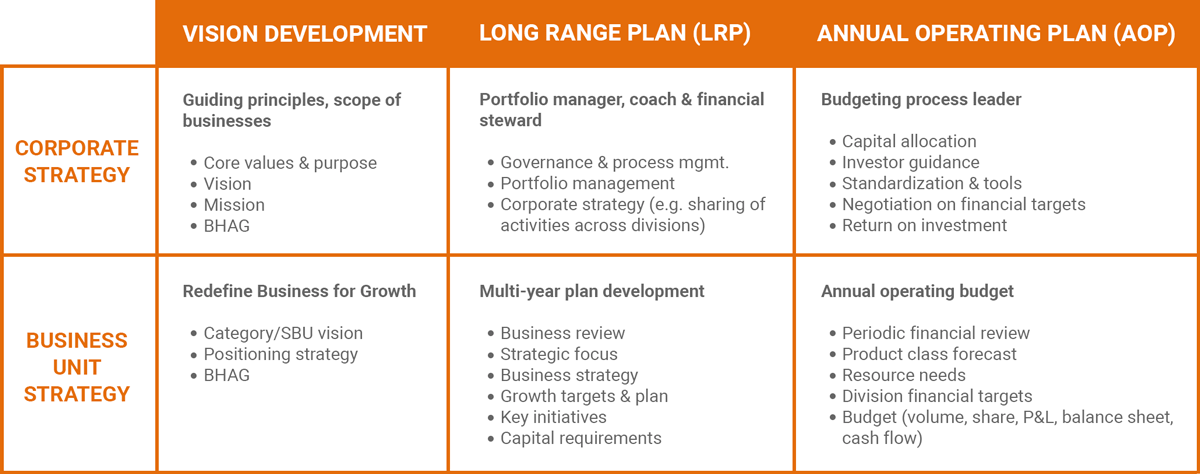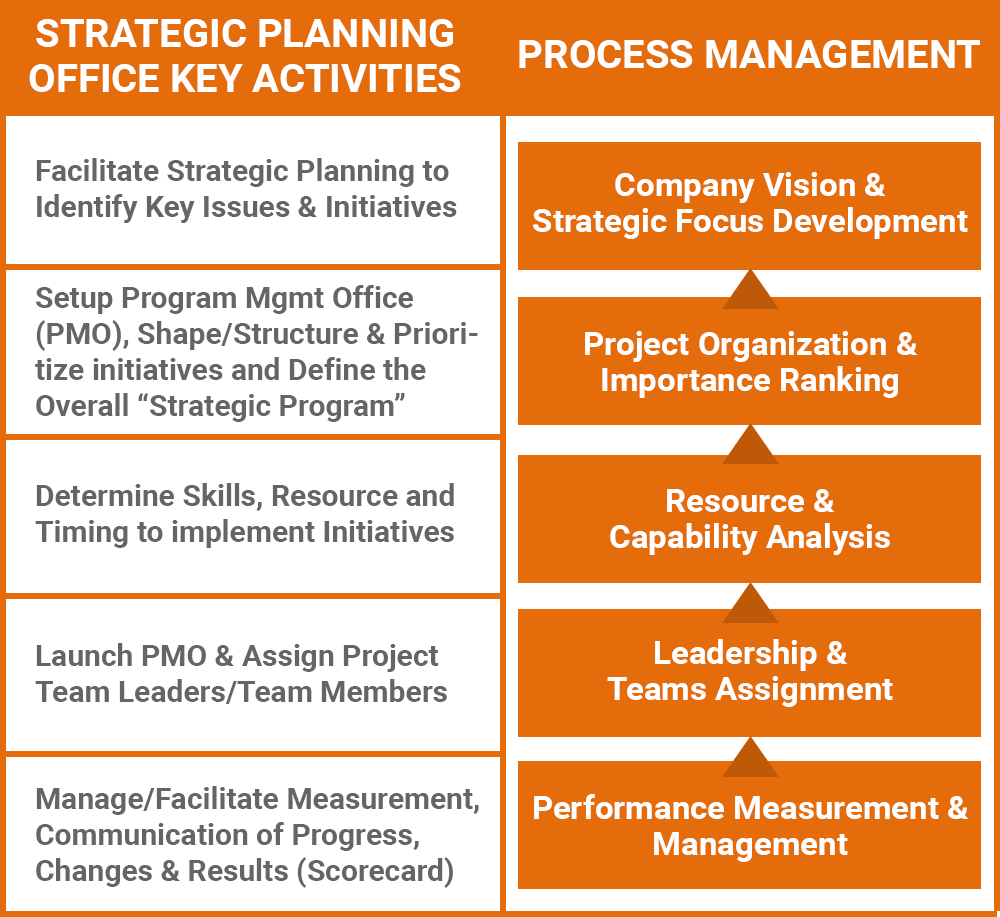Our Approach
The Valen Group uses proprietary strategic planning frameworks based on best-in-class methodologies at the corporate and business unit level, providing studies, facilitation, and development to improve planning effectiveness and deployment of strategic programs.
Offerings
Corporate & Business Unit Strategy
In corporate level planning, we help senior executives organize and execute a process to decide in which businesses to compete, allocate resources and coordinate activities. In business unit strategy, we support the divisional head (CEO, President or GM) in developing strategies within three areas: 1) Growth, 2) Competitiveness, and 3) Operational Effectiveness.
Our team brings fresh perspective and entrepreneurial passion to strategy development and a comprehensive planning framework customized to the client’s unique situation. Our approach considers three strategic planning process components:
Vision Development: Our methodology is derived from Collins & Porras theory of envisioning the future through a “vivid description” that evokes emotion; defining Big Hairy Audacious Goals, and Core Values & Purpose
Long-Range Planning (LRP): Is the planning process where strategies are developed to achieve growth plans, compete in existing markets and make organizational improvements.
Annual Operating Plan (AOP): Separating strategic planning from annual budgeting, yet having a framework to link them together allows resources to be allocated to the strategic and tactical priorities of the year, delivering better year-over-year results.

Some companies prefer to handle their own strategic planning activities, but have asked us to improve their process. In our experience we have found four common issues that when addressed improve strategic planning effectiveness:
- Develop a clear vision that evokes imagination and emotion and acts as an aligning compass in everyday decision-making
- Define separate roles & responsibilities between corporate and business unit level planning
- Link the strategic planning process (LRP) to the budgeting process (AOP)
- Develop a common set of tools, processes and templates for organization-wide planning
Strategic Funds Management
Strategic Funds Management is a progressive strategic project portfolio management methodology that can improve resource allocation and create transparency in spending and decision-making. It resolves critical issues for clients by linking the strategic plan, a multi-year, high-level planning process to the budgeting process, typically a one-year detailed planning process.
Strategic Planning Deployment
The Strategic Planning Deployment Framework was developed from our experience helping clients effectively manage a strategic planning program with multiple initiatives and report progress to stakeholders.

Case Studies
Increase Confidence in Success
A public company board rejected the strategic plan from top management. We worked with the CEO and CFO to setup a fact-based process for leadership to develop strategy, challenge assumptions and increase confidence in success. The Board accepted this plan and executed the plan including a successful sale of the company within 18 months, after difficulty in earlier attempts.
Develop Growth Strategy
Develop a 5-year growth strategy for an up & coming gourmet food manufacturer that would help them double the business. After a great run as a well-known specialty food manufacturer, the founder and management team needed to reassess their growth strategy. They knew that the past was not a good predictor of the future, and that they needed more rigorous, fact-based decision-making in their strategy. We helped them see the options for growth including shifting resources into more mainstream grocery and national expansion to grow their brand awareness and leadership position.
Assess Significant Growth Opportunities
Developed a business case for senior management to assess a new revenue opportunity in brand licensing for a major media company looking at opportunities in food & beverage. We assessed the market dynamics and sized the opportunities, presented structure changes as to how to execute and manage, and presented risks such as cannibalization to core business.













